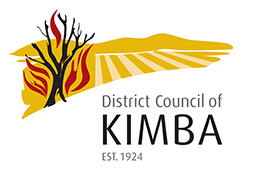Fire Danger Season
FIRE DANGER SEASON
The Fire Danger Season commences on November 1 of every year, and generally closes on April 15 of the following year. This may vary and can be brought forward or extended depending on seasonal conditions.
Further information on what you can/cannot do during the Fire Danger Season can be found at: www.cfs.sa.gov.au – Fact Sheet 6.6 Restrictions (what can I do/what can’t I do?) Further information regarding Australian Fire Danger Ratings can be found here: Australian Fire Danger Ratings - CFS
Permits to burn during the Fire Danger Season may be issued from the first Monday in February, with requirements of the Permit Guidelines within the Council District to be complied with.
FIRE PREVENTION
In the interest of public safety, Councils use powers under the Fire and Emergency Services Act 2005 to reduce the impact of fire, including bushfire, on the community.
This procedure starts with the identification of properties which need fuel hazard management prior to the commencement of the Fire Danger Season and includes processes to inspect, assess and reduce or eliminate the risk of bushfires.
Section 105F requires that an owner of private land must take reasonable steps to:
- Prevent or inhibit the outbreak of fire on the land
- Prevent or inhibit the spread of fire through the land
- Protect property on the land from fire
- Minimise the threat to human life from a fire on the land.
If you live in a township, this involves:
- Reducing all grass, pest plants and undergrowth to a height of no higher than 10cm and maintaining it for the entire season. (Burning is not permitted within town limits)
- Removing any dead wood or debris of a thickness of 6mm or less.
- Trimming trees which overhang any building.
- Clearing all gutters of material.
If you live in a rural area, this involves:
- Reducing all grass, pest plants and undergrowth within a 20m radius of any building, to a height no greater than 10cm and maintaining it at that level for the entire season.
- Removing any dead wood or debris of a thickness of 6mm or less, within a 20m radius of any building.
- Having at least a 5000lt water supply stationed at your residence.
- Having a fire fighting pump and adequate hose to sustain the pump pressure and reach all areas around your residence, making sure the pump is functioning well and is maintained at all times.
- Prune all trees which are overhanging any building.
- Create a break of at least 3m width around your entire property.
- Create further 3m breaks around individual fields or areas which may be a threat.
- Ensure that spark arresters are fitted to all combustion engines.
- Prepare an action plan for your property in case a fire should occur and ensure all family members are aware of this plan.
If you would like any further information, please do not hesitate to contact the Council on 08 8627 2026
